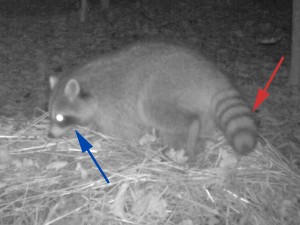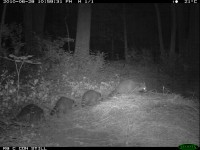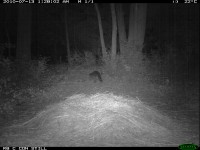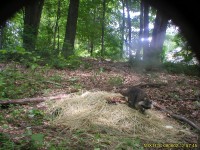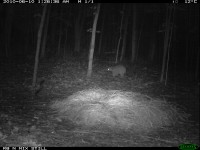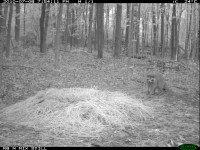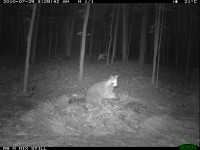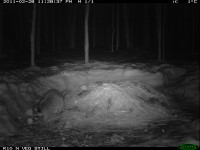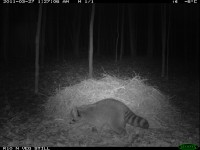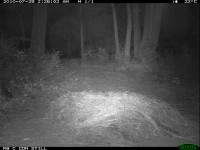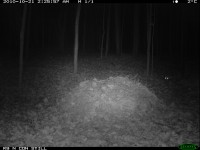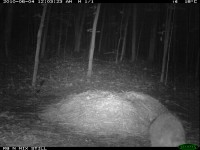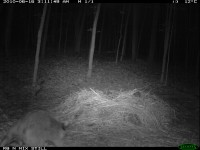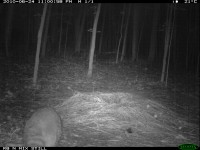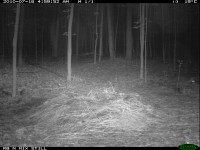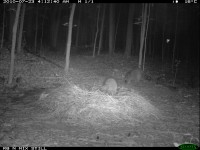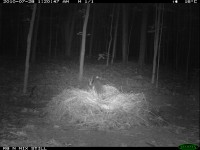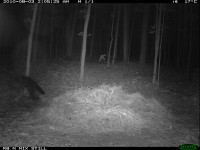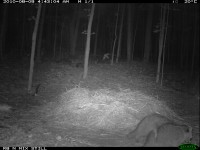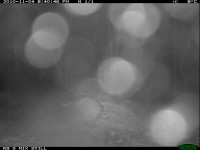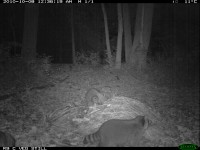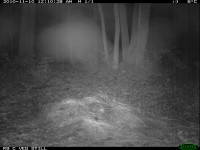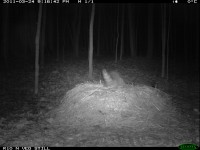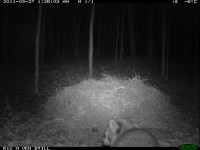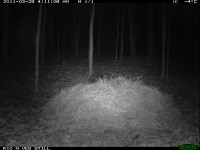Order: Carnivora, Family: Procyonidae
Appearance/Behavior: Its dark mask (blue arrow) and ringed tail (red arrow) give the raccoon (60 – 95 cm) a distinct appearance. The fur in general is grizzled gray. The light-colored fringes of the ears are apparent in head-on views. Relatively short legs keep this animal low to the ground. Group size of raccoons visiting the compost piles is variable, ranging from single individuals, pairs, and larger groups (apparently mothers with young). Occasionally raccoons will forage along with opossums, gray fox, domestic cats, or skunks. They have been documented reclined on their backs on the piles, as if resting.
Relative Frequency of Visitation in Study: Frequent.
Seasonal Activity: Year-round, with reduced activity during the coldest winter weather
Daily Activity: Primarily nocturnal, but with rare daytime visits.
Similar Species: The distinctive mask and tail set apart the raccoon from other compost visitors. An obstructed view of strictly the back of a raccoon might be confused with a similar portion of an opossum or gray fox. The opossum’s gray fur is shaggier and not grizzled like the raccoon’s. The gray fox has grizzled gray fur like the raccoon, but its relatively longer legs place it higher off the ground.
Well-defined Images:
Challenging Images:
Help with challenging images: Rows 1-2, Rows 3-4, Rows 5-6, Rows 7-8
Near Video:


